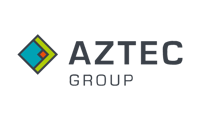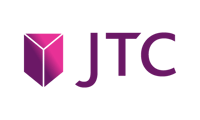What is a board portal ?
Here’s how to choose the right one for your board and governance team.
A board portal is specialist governance software used by governance teams and board members to deliver effective and efficient board operations.
Board portals enable company secretaries, governance professionals, and their teams to collate, distribute, and manage board and committee materials digitally. They provide board chairs and board directors with secure, paperless access to mission-critical information, such as performance reports, strategy papers, and policy and reference documents. Board portals can also be used for secure board communication and to support the board in executing certain compliance responsibilities.
Board portals enable boards and governance teams to do all of this without the logistical burden and security risks associated with using paper, email, or generic document storage tools. The right tool can save governance teams considerable time, effort, and money while also improving board performance.
What can you do with a board portal?
Board portals are a valuable tool for delivering effective and efficient governance. They create a central repository for board information that is searchable, secure, and available 24/7. They also give directors and governance professionals the tools they need to execute certain responsibilities, such as signing documents electronically.
Board portal use cases
Board portals have various use cases, all of which improve the efficiency and security of board operations. These include:
- Document management: Board portals act as a secure, central repository for important documents like agendas, minutes, management reports, business case approval papers, policy documents, and reference materials.
- Meeting collaboration: Board portals can help with organising and managing meetings. Features support governance teams with planning agendas, requesting papers from management, and sharing information with meeting participants. Board members can easily review content before and after meetings.
- Approvals: Board portals can facilitate paperless board approval processes, with digital document signing, for example.
- Compliance and audit: Board portal software offers secure, auditable records which can be used for internal reporting and to evidence regulatory compliance.
- Communication and collaboration: Secure messaging features allow board members to communicate with each other — for example, asking clarification questions outside of meetings so that meeting time can be used more effectively.
- Task management: Board portals can help governance teams to track action items and owners, ensuring accountability and transparency across board activities.
These use cases make board portals an essential tool for good governance. They make it easier for directors to perform their duties, ensure smooth and secure board operations, and reduce the administrative burden on governance teams.
Who are the primary users of board portal software?
Board portals are commonplace across all sectors and across listed, privately owned, government, and non-profit organisations.
The main day-to-day users of board portal software are board directors, company secretaries and governance professionals, executive committees and management teams, and IT and information security teams.
- Board directors use board portals to access documents, search for information, communicate with each other, and collaborate on board tasks.
- Company secretaries and governance professionals use board portal software to streamline administrative tasks, manage the flow of information to directors, organise board meetings, and ensure compliance.
- Executive committee and management team members use board portals to share information with the board. They can also use board portals to support their own meetings and to share information with each other.
- IT and information security teams use board portal software to manage information security risk around board and committee materials and to provide a more modern work environment for directors.
What are the key features of board portal software?
A good board portal will streamline the production of board and committee materials and give directors secure access to key documents. It should also support the smooth running of board and committee meetings.
To deliver these outcomes, board portals will offer a wide range of features, including:
- Document management
- Meeting management – for example, scheduling and calendar integration
- Agenda creation
- Real-time collaboration, such as e-signatures, annotations, and secure messaging
- Task management, such as requesting papers from management
- Secure access, with granular access permissions
- Mobile access
- Search functionality
- Audit trails, analytics, and reporting
- 24/7 service and support
How secure is board portal software?
The information shared in a board portal is highly confidential, so reputable board portal providers take the security and resilience of their software platforms very seriously.
When assessing a board portal provider, it’s important to consider how they encrypt your data and the infrastructure they use to deliver their services, as well as their approach to penetration testing, external auditing, and accreditations.
- Encryption: There are two types of encryption to consider when evaluating a board portal. The first is how data is stored when not being accessed (“at-rest” encryption), and the second is how data is encrypted when it’s being sent from the server to a device (“in-transit” encryption). The level of encryption you should look for is RSA 4096-bit standard encryption in transit and AES-256 at-rest.
- Infrastructure and cloud security: The infrastructure that delivers data over the cloud is an integral element of your security. Generally, board portal providers either build their software upon a major cloud provider such as Microsoft Azure or Amazon Web Services (AWS) or create and host their own secure data centres to store their clients’ information.
- Penetration testing: Board portal providers that regularly engage in penetration testing or ethical hacking to ensure their systems and data are secure demonstrate their commitment to their clients’ security.
- External audits and compliance: When selecting a board portal software provider, check that they have undergone extensive external audits which look closely at their procedures, controls, and security practices. These audits focus on availability, security, privacy, confidentiality, and system integrity. Additionally, assess whether a prospective vendor meets the highest security standards (such as ISO 27001), as these are key indicators of how securely your information is held.
Additional security features to look out for include:
- Two-factor authentication
- Granular permissions
- Remote wiping of devices
- Biometric security
- Audit trail
- Business continuity and disaster recovery plans
Find out more about how board management software keeps your most sensitive and mission-critical information safe, in our guide to board portal cybersecurity.
How much do board portals cost and what is the pricing structure?
The cost of board portal software varies based on factors like features, the number of users, and the level of customisation.
Typically, pricing is subscription-based, ranging from around £10,000 per year for mid-sized organisations to £50,000 per year and upwards for enterprise organisations. Some providers offer tiered pricing, while others charge on a per user basis. Additional costs may apply for advanced features or certain types of support. You should fully understand your organisation's needs to choose a provider that aligns with your budget and goals.
What questions should you ask a board portal provider?
When evaluating a board portal provider, consider asking the following questions:
- Security: What security measures are in place to protect your data?
- Compliance: Is the portal compliant with relevant regulations (e.g. UK GDPR)?
- User experience: How easy is it for board members and governance professionals to use the portal?
- Support: What kind of customer support is offered, and is there training available for users?
- Pricing: What is the pricing model, and what is, and isn’t, included in the fee?
- Audit trails: Does the portal provide a clear audit trail for document access and changes to ensure transparency and compliance?
These questions will help you assess the portal's functionality, security, and compatibility with your organisation’s needs.
What are the benefits of adopting a board portal?
Using a board portal improves the efficiency of agenda planning and board pack production processes, which saves governance teams time and money. Board portals also mitigate information security risk by giving you greater control over document access and distribution.
For directors, board portals make it easier for them to prepare for board and committee meetings and perform certain compliance aspects of their role. It also helps aspects of the board meeting to run more smoothly.
To put this into perspective, the building society Nationwide estimated that switching to Board Intelligence cut the time they spent preparing for board meetings by 45%.
In short, using a good board portal can and will save your governance team a huge amount of time.
How does board portal software improve board efficiency?
Board portal software streamlines board management processes in the following areas:
- Board meeting preparation
- Board pack collation and distribution
- Document access
- Board meetings
Efficient board meeting preparation
Board portals can streamline some of the most time-consuming tasks associated with preparing for board meetings. For example:
- Create agendas from a template or copy a previous meeting agenda.
- Add, remove, or re-order agenda items by drag and drop, with timings updating automatically.
- Share location and/or log-in details for in-person, hybrid, and virtual meetings.
Board Intelligence’s Agenda Planner tool takes this a step further, and builds best practice agenda planning guidance into the meeting preparation process. You can also tag agenda items by stakeholder group and get a single view of where your board is spending its time — data that’s vital for board performance reviews and regulatory reporting.
Hassle-free board pack collation and distribution
A board portal can automate key steps in the board pack process, helping governance teams to save time when commissioning, compiling, and distributing board materials. For example:
- Collate different file formats such as PDFs, slide decks, and narrative reports, into a single document.
- Create sections, tabs, and page numbers in just a few clicks.
- Quickly and easily distribute final packs within a secure platform.
- Send tailored board notifications when you publish the pack.
- Republish late papers or last-minute amendments without losing board members’ questions or notes.
In addition, with Board Intelligence’s Briefing Tool (available within the board portal), you can share focused briefs for board paper authors, so they have clarity on what they need to include in their reports from the get-go. The Briefing Tool also helps you to manage these paper requests centrally, so you don’t have to chase for submissions and late papers.
Secure, pain-free document access
Important documents, conversations, and links are stored in a single, secure platform that board members can easily access and navigate.
- Board papers available on any device, both online and offline, so directors can access them wherever they are in the world and at any time of day (or night).
- Combine papers into the pack in the right order, with consistent page numbering and no version control issues.
- Control who has permission to edit and view documents, or individual sections of documents.
- Alerts inform board members when new documents are uploaded.
- Fast and simple search function, available even when offline.
- Share links to specific pages of the pack with other board members.
Board meeting productivity
Board portals can make board and committee meetings more productive. They can also help chairs manage meetings more effectively. For example:
- Navigate to remote meetings directly from the board pack.
- Compare papers or see the board pack and virtual meeting app side-by-side, with split-screen functionality.
- Ask clarification questions and resolve points of detail before the meeting, via in-built annotation-sharing or communication tools.
- Share questions or points for debate with the chair in advance, so the chair can steer the conversation and involve attendees at the right point in the meeting.
- Fast and simple search function, available even when offline.
- Reserve meeting time for conversation, not administration — for example, share, comment on, and approve minutes, or vote or collect e-signatures (with a robust audit trail), before the meeting starts.
Are there any challenges and concerns with using board portal software?
For organisations that aren’t already using a board portal, the main concern will be changing the habits and workflows of directors and governance team members. There will be a learning curve associated with implementing the new software, and some users will navigate this more quickly and easily than others.
Security is another concern. Board information and conversations are highly sensitive, and organisations need to be confident that their chosen portal is secure enough to keep their data safe.
Case studies and customer success stories
Board Intelligence is trusted by more than 75,000 directors, executives, and governance professionals globally — from charities and schools to leading corporate service providers like Waystone and global engineering firms like Keller.
Find out why nearly two-thirds of our business comes from referrals and take a look at some of our client success stories here.
Learn more
How to choose the right board portal for your organisation
Following these four steps will help you choose the right board portal for your organisation:
- Assess your organisation’s needs and map out your decision-making process — work out how many users you’ll need and the level of security required, the budget you have available, and the process you’ll need to follow to get the spend signed off.
- Scrutinise your feature wish list – identify which specific features you’ll need and decide which are ‘must have’ or just ‘nice to have’.
- Research your options – look for a user-friendly interface that minimises training requirements, while offering robust security and effective customer support. Also, assess how scalable the platform is and what existing users have to say about it.
Compare pricing plans to find one that fits your budget while offering the necessary functionality.
What if you’re switching board portals?
If your board portal doesn’t offer the features you need, you’re unhappy with the software’s performance, or you want better support, it might be time to think about switching to a new board portal.
Switching might seem like a difficult thing to do, but with the right board portal, and the right support, it doesn’t have to be.
Read our guide to switching board portals to find out how Board Intelligence can support you with the transition.
How can you enhance the impact of your board portal?
The best board portals don’t just offer efficiency benefits; they offer features that help improve board effectiveness, such as board evaluation tools. Providers can also offer additional support around things like agenda planning and board reporting.
It’s worth remembering that a board portal will not make a board materially more effective by itself. That only happens when complemented by other tools and services, and when governance teams use the time they save for strategic projects — for example, supporting management to deliver high-quality board and management papers.
When should you start using board portal software?
The first thing to consider is security. Whether it’s an email breach or a phishing attack, the security of board materials is often overlooked until it’s too late. Any threat to a company’s security is a threat to its reputation that can impact its financial position. External board members operating outside of the company’s IT infrastructure are a risk in this regard, so it’s worth getting a portal in place as soon as you have a professional board. Board portal platforms provide a secure, central platform for sharing, storing, and working with sensitive documents.
Many directors today join boards expecting there to be a portal in place, and board portals are increasingly considered a “hygiene factor” by investors and regulators. So, if you’re hiring new board members, preparing for your next investment round, or getting ready to IPO, you should get a board portal in place. Prospective investors and board members will expect you to take governance and information security seriously, and this is one of the best ways to demonstrate a professional approach.
What makes Board Intelligence different?
There are board portals, and there are board portals. Board Intelligence’s board management software is rated #1 in EMEA by board members and governance teams alike* because it offers:
- 24/7 service: Concierge-level support from BI24, our specialist support team. They’re there to help you get the most from your board portal software, any time of day or night.
- Value-add features: We were in the boardroom long before we were in tech. We’ve baked 20 years of boardroom insights into our board portal, designing tools and features that deliver what directors and governance professionals need, without distraction.
- Enterprise-grade security: Board Intelligence’s board portal uses the highest-quality data centres and industry-leading security standards. Read more about our approach to security
* According to software review site G2.
Want to see Board Intelligence’s software tools in action or explore how our board science experts could help to supercharge your board?
Book a demonstrationFrequently asked questions
-
Can board members access materials offline using a board portal?
Yes, materials are accessible and searchable offline, once they have been downloaded within your portal app.
-
What kind of board portal training and support do you provide?
We provide onboarding and training support for all users and offer round-the-clock, concierge-level service and support. Our BI24 team of product specialists are available 24/7/365.
-
How long does it typically take to implement board portal software?
The implementation of board portal software can takes from as little as a few days to several weeks, depending on the complexity of the platform and the organisation’s specific needs.
-
Can board portals be accessed on mobile devices?
Yes. The Board Intelligence board portal is available via apps for Windows 10 and above, MacOS, iPad and iPhone.
-
Are board portals suitable for smaller organisations?
Yes, board portals can be suitable for smaller organisations, though it depends on your specific needs and budget. Many board portal providers offer scalable solutions, with basic plans designed for smaller teams or organisations.
What is board effectiveness?
Board effectiveness refers to how well a board of directors fulfils its responsibilities. These responsibilities are set out in company law and supplemented by corporate governance codes and guidelines, which vary by country and sector.
Beyond compliance with relevant laws and regulations, board effectiveness also relates to how well a board performs its supervisory and steering roles.
The board’s supervisory role is focused on monitoring the delivery of short-term performance. When performing this role, directors are seeking assurance and managing risk. They are concerned with the organisation’s near-term outlook and whether the business will deliver its operational and financial goals.
The board’s steering role is focused on enabling sustainable, long-term value creation. The board is in steering mode when considering strategy and making significant investment decisions. When fulfilling this role, directors must be strategic, forward-looking, and consider a wide range of external factors, so that they can shape management's thinking and make high-quality decisions in alignment with the organisation’s purpose and values.
The most effective boards excel in both roles to deliver short-term goals and long-term vision.
Why does board effectiveness matter?
Boards impact the key drivers of organisational performance, from CEO succession planning and financial strategy to sustainability and culture. By setting the organisation’s strategy and goals, they define the parameters within which decisions are made throughout the organisation. This shapes how resources are allocated and outcomes are achieved far beyond the boardroom. They also ensure the organisation maintains its license to operate by proactively monitoring and responding to risks and complying with relevant laws and regulations.
Many academic studies have explored the link between effective boards and successful organisations. The most powerful reminder of the importance of board effectiveness, however, comes from a different source: the government-led inquiries and lawsuits that follow in the wake of corporate scandals. Their conclusions, and the evidence that emerges through them, highlight the importance of an engaged and effective board in preventing corporate failure, with boards having been implicated in high-profile collapses from Enron and Blockbuster in the US to Carillion and BHS in the UK.
As the Institute of Directors found in their analysis of the UK Post Office scandal, “the root causes were failures in human decision-making, organisational culture and business ethics. Post Office governance – and specifically the board of directors – proved unequal to the task of addressing these issues.”
What are the three pillars of board effectiveness?
Effective boards are built on three pillars: individuals, infrastructure, and information. These pillars form the backbone of how a board functions and delivers impact.
Individuals
Having the right people around the table, and ensuring those people behave in the right way — as individuals and as a group — is essential. Boards with diverse skills, relevant experience, and a culture of collaboration are more likely to be able to navigate complexity, think creatively, and make high-quality decisions.
Infrastructure
Having appropriate policies, tools, and processes in place creates a strong framework for ethical and compliant decision-making. It also ensures board operations are efficient, so that the board delivers satisfactory value-add in return for the resources required to support it.
Information
Accurate, timely, and well-presented information ensures directors understand the drivers of performance while enabling them to think creatively and make high-quality decisions. They need information that covers the relevant topics in appropriate detail to enhance their knowledge and stimulate productive discussions.
What do top-quartile boards do differently?
The three pillars of board effectiveness are key to building a well-rounded board that fulfils its various responsibilities. The most successful boards, however, demonstrate two additional characteristics that enable them to deliver even greater value: they are impact-focused and have an “innovation mindset”.
Impact-focused
Highly effective boards actively contribute to organisational strategy, testing the viability of current business models and building alignment at all levels. When boards are focused on impact, they inject momentum and agility into the organisation’s decision-making, enabling it to go further, faster.
Innovation mindset
High-performing boards are future-focused, lean into emerging trends, and invite external perspectives to ensure the organisation stays ahead of the innovation curve. They value disruptive thinking and encourage a culture of rapid experimentation.
What are the key factors affecting board effectiveness?
A wide range of factors can impact board effectiveness. That is, in part, because boards are not homogeneous; the average public company board has between 9 and 11 directors, all of whom bring a different set of skills, experiences, and personality traits into the group.
Some of the key board effectiveness factors to consider include:
- Composition: The board’s performance will be heavily influenced by its size and shape — for example, the number of members, balance of executive and non-executive members, and the knowledge, expertise, and backgrounds of individuals. A more diverse group will analyse situations from a wider range of angles and bring more ideas to the table, and this ultimately drives better outcomes. A 2023 McKinsey study, for example, found that companies in the top quartile for board-gender diversity were 27% more likely to outperform financially than those in the bottom quartile.
- Culture: A collaborative, open-minded culture that encourages challenge, debate, and the expression of ideas will enable the organisation to tap into the knowledge and expertise of board members. It will also support the board in understanding performance and shaping robust decisions. Research shows that simply giving people “permission to debate” drives better outcomes.
- Mandate: It’s important that the board is clear on its roles and responsibilities, and that the wider organisation understands its role too. This focus and alignment ensures directors can engage with the right issues in the right way, at the right time, and that its performance can be more easily assessed.
- Strategy: The organisation’s strategy shapes what is required from the board. If the business is pursuing an M&A strategy, its board will need a different set of skills and experiences to shape and execute this strategy compared with a turnaround or restructuring situation, for example.
What are the common challenges affecting board effectiveness?
Only 30% of executives rate their boards as “good” or “excellent”. Meanwhile, 62% of CEOs want to replace one or more of their directors. This research by PwC suggests there is significant room for improvement in how boards operate and that some of the factors listed above can be difficult to influence without appropriate tools and resources.
Common challenges include a lack of diversity, inadequate training, crowded meeting agendas, and limited access to timely information. These issues can hinder the board’s ability to address complex issues and make timely and informed decisions.
For example, research by Board Intelligence shows that fewer than half (48%) of directors and governance professions get value from their board papers and the average agenda item gets only 21 minutes of discussion time.
By offering targeted education and professional development opportunities, taking a strategic approach to agenda planning, and providing best practice report-writing guidance to management, boards can overcome these obstacles and improve their performance.
How do you measure board effectiveness?
Measuring board effectiveness generates valuable insights that can help to improve the board’s performance and enhance its contribution to organisational success.
Through regular board evaluations, whether self-assessments or facilitated external board performance reviews, boards can identify their strengths and weaknesses and benchmark their performance against best practice and regulatory standards. This allows the chair and company secretary to identify gaps and take proactive steps to improve the board’s effectiveness. Technology tools can also gather and analyse data on board processes, activity, and impact, to help the board develop a continuous improvement mindset.
According to research conducted by Board Intelligence in December 2024, only 17% of executives believe their boards are set up to harness the opportunity around AI. To navigate new challenges and risks and exploit emerging opportunities, boards need to regularly reflect on their performance. By identifying gaps, boards can take proactive steps to stay ahead of industry demands and deliver forward-looking guidance that helps their organisations to thrive in the long term.
How can you improve board effectiveness?
Improving board effectiveness is crucial for achieving long-term business success. The most effective boards have optimised their processes and practices in the following ways:
- Board composition and culture: A diverse board with directors who have a wide range of relevant skills, expertise, and experiences can significantly impact board effectiveness. You can strengthen your board by conducting regular skills audits, recruiting for diversity, and offering continuous learning.
- Board collaboration and communication: Effective communication and collaboration are essential for a high-performing board. Planning effective meeting agendas, providing directors with high-quality board reports which include insightful KPI dashboards, and distributing materials early, for example, will ensure that board members are well-informed. This drives more productive discussions and more impactful decisions.
- Board focus and priorities: Having a clear sense of priorities, role, and responsibilities helps boards to invest their time and effort where it’s likely to have greatest impact. You can make it easier for the board to focus on what matters by clarifying the board’s mandate, mapping out individual directors’ roles and responsibilities, and engaging in an annual prioritisation and planning process.
- Meeting management: Effective meetings are the hallmark of effective boards. To improve the productivity of meetings, you should clarify meeting objectives, review materials and ask clarification questions in advance, and use technology tools such as a board portal or agenda planning software to streamline processes.
How do you manage a board effectively?
Managing a board isn’t easy; that’s why the most effective boards are led by highly effective chairs and supported by skilled governance professionals.
Effective board management requires a careful balance of soft and hard skills – from a thorough understanding of the applicable laws and regulations to active listening and delicate diplomacy. It also requires:
- Rules of engagement: The chair and company secretary should set clear expectations for both management and board members — for example, around preparation requirements and meeting behaviour.
- Priorities: Boards have a vast remit and limited time. Understanding what matters, and building agendas and meeting materials around these priorities, is crucial for using board meeting time effectively.
- Accountability: A sense of accountability can be achieved by setting and monitoring appropriate key performance indicators (KPIs) for the board that align with its role and responsibilities and the organisation’s overall objectives.
- High-impact reporting: A thorough briefing process for management, a structured approach, high-quality writing and effective data visualisation will ensure board papers are easy to engage with, insightful, and actionable.
- Open communication: Information should be shared with the board on a regular basis. The chair should also encourage an open exchange of information and views by building an inquiring culture and recruiting directors with strong critical thinking
- Continuous improvement: A continuous improvement approach is commonplace in high-performing teams and should also be applied to boards. It’s made easier if the board has a clear mandate, relevant KPIs, and the tools with which to monitor its performance on an ongoing basis.
Delivering these requirements and building a diverse board with relevant skills and experience will enable the board to deliver value consistently and confidently.
Trusted by 70,000+ directors and executives across the Fortune 500, FTSE 100, and OMX 30.
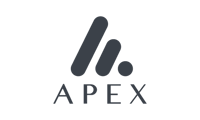


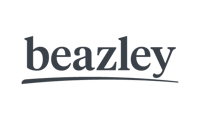




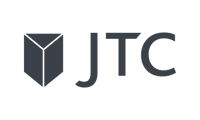
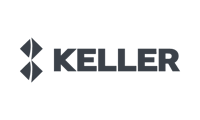

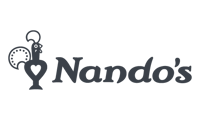

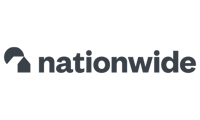
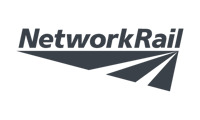
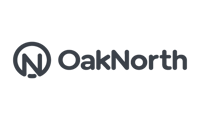
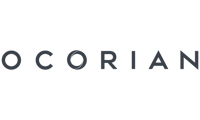



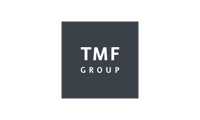


Board evaluations rooted in science, not convention
Board effectiveness reviews that go beyond governance requirements and focus on the value and impact of your board.
- Board performance framework shaped by 20 years’ experience across thousands of boards.
- Analytics, data-driven insights and actionable recommendations.
- Custom reviews for different committees and subsidiaries across all governance structures, from mutuals to listed companies.

Team diagnostics that drive deeper insight
Don’t wait for a formal board or executive team evaluation; get real-time feedback for continuous improvement.
- Digital tools, analytics, and deep-dive assesssments led by our team of experts.
- Evaluate board and executive team performance drivers not typically covered by board evaluations — from agenda analytics and meeting materials to decision-making agility and innovation quotient.

See how your board pack stacks up
Find out if your board information is setting your board up to succeed — or getting in its way.
- Benchmark board and committee materials against best practice and your peers, with a framework shaped by our work on thousands of board packs.
- Identify strengths and opportunities for improvement with expert, data-driven analysis.
- Enhance board pack quality and impact with a bespoke transformation plan.

Put analytics at the heart of board agenda planning & reporting
Expert analysis and benchmarking of board and committee agendas to support effectiveness reviews and stakeholder (and UK s172) reporting.
- Analyse where and how effectively your board spends its time.
- Identify actions you can take to deliver more focused, forward-looking, and strategic board meetings.



